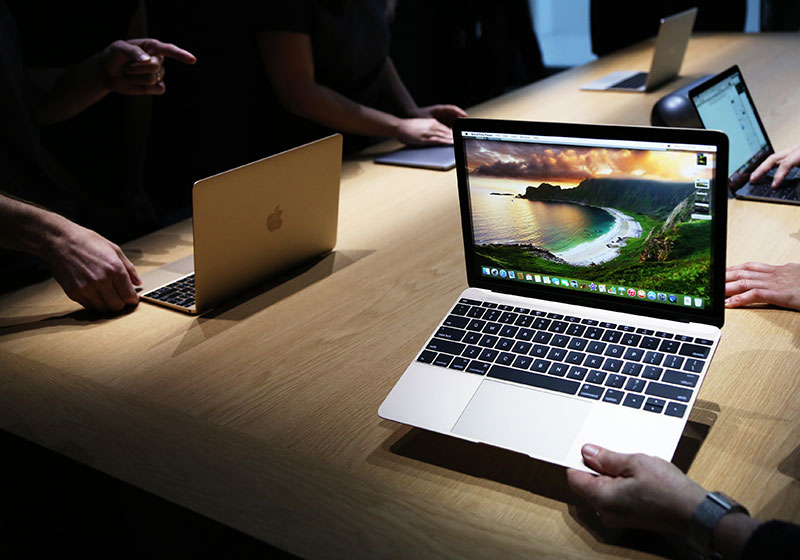
Apple announced a brand new 12-inch ultra-thin MacBook during yesterday's big Spring Forward event, and while purists are frazzled over the new line's lack of "Pro" or "Air" in the name, it looks like Apple brought in the best of both worlds to create a truly powerful product.
"With the new MacBook, we set out to do the impossible: engineer a full-size experience into the lightest and most compact Mac notebook ever," the official description reads on Apple's website. "That meant reimagining every element to make it not only lighter and thinner but also better. The result is more than just a new notebook. It's the future of the notebook."
The new MacBook is only 13.1 mm thin, weighs only 2 lbs, features the fanless Core M Intel processor, and still features the all-important Retina Display on a 12-inch screen running at 2304 x 1440 resolution. A full-size keyboard is a welcome surprise in such a portable design, but it wasn't an easy feat. Apple had to redesign every single key and its internal mechanism to not only make the keyboard itself thinner, but also more comfortable and responsive.
And as many had already speculated, the notebook's trackpad was redesigned from the ground up. The new Force Touch trackpad "is engineered to deliver a responsive, uniform click no matter where you press the surface. And underneath, force sensors detect how much pressure you're applying and give you new ways to interact with your Mac," according to the product's official description.

Several tech publications got their eager hands on the new MacBook, and their opinions vary a bit, but everyone agrees that this new product line is exciting for Apple fans. But that keyboard wasn't very popular with reviewers.
"I actually cringed a bit when I first saw the new MacBook's button layout: The keys here really don't have much travel," Engadget's Dana Wollman wrote in her hands-on preview piece. "Given that I review Ultrabooks for a living, and am so often tasked with testing shallow keyboards, I almost instinctively cocked my hands a certain way; I was prepared for a keyboard that wouldn't offer much resistance under heavy typing."
Wired's David Pierce was especially enamored by the design of the new MacBook. "In every way, this is a thing of beauty," he said. "It's no wonder Apple spent so much time talking about the engineering behind it. Everything about the MacBook is about beauty, whether it's the single USB-C port on the left side-the only port on the entire device save for a headphone jack on the right-or the new Gold, Space Gray, and Silver colors. The Gold is actually much more handsome than gaudy, but the Space Gray is my favorite of the options. It's dark and sleek, fitting for a device that's so, so very thin."
"But then you use it, and the positive feelings fade a bit," Pierce continues. "For all the talk about the new butterfly keys, the new, better keyboard, I immediately hated using the keys. There's basically no travel, no movement."
TechRadar's Gareth Beavis agrees. "The keyboard has been retooled to include a 'butterfly hinge' underneath each key. This means they're massive and to be honest, lacking in travel. I'm sure that's the sort of thing that after a while will become a genius idea for some, but in my brief time with it all I could think was 'man, these are some big ol' keys'."
Even Fortune's Jason Cipriani wasn't impressed with those keys. "It's not that the keys are hard to press, or even awkwardly placed. If anything, the keys are almost too easy to press. A touch-typist will fall in love with it after just a few minutes of tapping away. Others will take long to adjust to a keyboard that stretches to the very edges of the MacBook's housing. I'm in the latter camp."
So while everyone pretty much agrees that the revolutionary new keyboard redesign might take some getting used to, most still praise the product for its overall design choices and power.
The new MacBook starts at $1299, which is more expensive than most other notebooks from Apple except the 15-inch MacBook Pro Retina, but you're paying for that portability and power combination.














